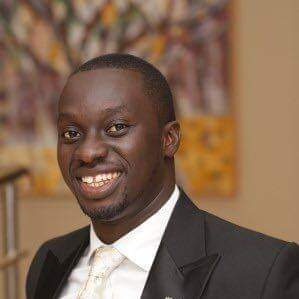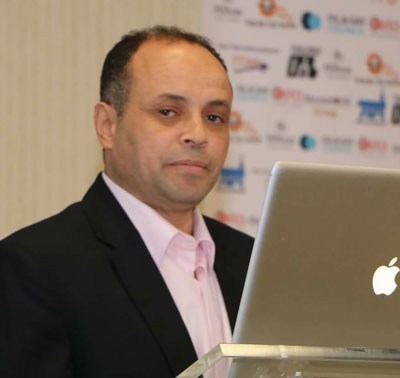Engr Emmanuel Sagoe Paintsil
Reservoir Engineer
- 8 year Industry Experience.
- Current Work – Cementing Technical Professional, Halliburton Ghana – 7 years.
- Reservoir Engineering Facilitator
On July 11, Consumer Watchdog and the FracTracker Alliance reported that eight regulators at California’s Division of Oil, Gas and Geothermal Resources (DOGGR) owned stock—in some cases, more than $100,000 worth—in the oil companies they’re supposed to regulate. The groups also noted that permit approvals for hydraulic fracturing in the state had doubled over the same January-to-April timeframe last year, despite the stated opposition of new California Governor Gavin Newsom.
Newsom acted quickly. Within hours of the damning report, the governor fired State Oil and Gas Supervisor Ken Harris. In a letter to the state’s Department of Natural Resources ordering the dismissal, Ann O’Leary, Newsom’s chief of staff, wrote that Newsom “has long held concerns about fracking and its impacts on Californians and our environment, and knows that ultimately California and our global partners will need to transition away from oil and gas extraction.”
The move put to rest—for the moment at least—concerns among some environmentalists about Newsom’s dedication to moving his state beyond oil. Hopes were high when he was elected in November of 2018, and with good reason: The year before, as the state’s attorney general, Newsom had informed the Trump administration that California’s “boom-and-bust” oil economy was nearing its end. In his gubernatorial campaign, he rejected contributions from fossil-fuel interests, and suggested in debates that hydrofracturing, the controversial process used to extract a fifth of California’s crude, “was beginning to fall on its own petard.”
“He’s going to be the pioneer of phasing out oil and gas extraction in California,” predicted Kassie Siegel, director of the Center for Biological Diversity’s Climate Law Institute. “He’s going to be the leader the world needs on this.”
Six months in, however, little on the petroleum front had changed. Newsom’s predecessor, Jerry Brown, had infamously fired a pair of industry regulators for slowing down drilling permits by enforcing pesky state laws, and the same oil regulators that Brown installed were still in place. And Chevron had yet to stop the flow of polluted water and oil that had been spilling into a remote central California canyon since May (as of this writing, the spill had exceeded 800,000 gallons, according to the Los Angeles Times).
Nor had oil companies suffered any regulatory setbacks. Between January and April of 2019, production had declined over the same period in 2018 by a statistically trivial two percent. Some environmentalists began to worry.
To be fair, the governor had a lot on his hands in his first six months. “The state has been slammed with disasters associated with climate change,” notes Kathryn Phillips, director of Sierra Club California: Wildfire recovery, the bankruptcy of PG&E, the state’s largest investor-owned utility, and the downgrading of the two other California utilities’ credit ratings “has made everyone in energy very nervous. He’s had to invest a lot of staff time responding to disasters.”
Newsom did send up at least one hopeful flare when he signed off on a state budget that includes $1.5 million to study a managed decline of the state’s oil production. Two weeks before the DOGGR report, Siegel had called that budget item “a really big deal.” California, she said, “is the first major oil-producing state to acknowledge that fossil fuel extraction needs to end.
“It’s something we had been asking the Brown administration to do for two years,” Phillips says, referring to the #BrownsLastChance campaign that called upon the then-governor to take action to scale back California oil.
The Sierra Club and other organizations had also been lobbying the Newsom administration to return DOGGR to its rightful mission: Not to serve the oil industry, but to regulate it in the name of public health and safety. O’Leary’s letter, says Phillips, “sent a very strong signal that he’s thinking about this issue and taking action where he can. That’s very encouraging.”
“We’re hopeful that this is just the first of transformational changes,” agrees Siegel. Environmental justice groups are still demanding the state establish a half-mile buffer zone between new wells and residential areas, and Siegel wants to see Newsom start turning down permits, which she argues he has executive power to do. “No amount of regulation is going to keep California safe from the oil industry,” she says. “There’s no way to regulate oil extraction and respond to the climate emergency.”
Phillips is also encouraged, but not enough to let up on the pressure. “The governor so far has made progress,” she says, “but there’s a lot more to be done, and a very narrow time frame to do it. Because the planet is melting.”
Purchase the HSE in Oil and Gas application form at our Accra, Ghana Office
Cost of Application Form: US$50 (GHS800).
Office Address:
GOOGPro Ghana, GNPA Building Room 260 at Kokokomlemle, Near ATTC and Star Assurance, Accra.
Digital Address: GA – 0724744 Ghana.
Call +233 55 248 4485 or WhatsApp +233 54 159 5804
Completed application form must be scanned and submitted to careers@googpro.org on or before May 05, 2025; for training program starting May 12, 2025 and June 04, 2025;
for training program starting June 11, 2025.
Training and certification fee is US$600
Field work starts July 01, 2025 and August 01, 2025 respectively
Engr Emmanuel Sagoe Paintsil
Reservoir Engineer

Dr. Ahmed Zakaria Noah
PhD Petrophysics (Waseda University), M.Sc in Petroleum Geology, B.Sc in Geolog has accumulated 15 year of successful work experience in Oil and Gas drilling wells and well site Geologist, Data Engineer, Mud Logging Coordinator, Reservoir Engineer, Survey Engineer, worked in the areas of hydraulic fracturing in tight-gas reservoirs, MWD, Senior LWD Engineer, Direction Engineer along strong experience in Open Hole Logging Interpretation throughout overseas with different clients in different country locations.

Publications:
Mohamed A. Kassab and MostafaG.Temraz and A. Nooh: Preliminary Study of Capillary Pressure Derived Parameters: Lower- Middle Miocene- San El Hagar-1 well, East Nile Delta, Egypt. EPRI, Nasr City, Cairo, Egypt British University, Cairo, Egypt, 2012. Egy.J. Appl. Geophys., Vol. 11, No. 2, 201-217, 2012.
A.Z. Noah: Optimizing Drilling Fluid Properties and Flow Rates for Effective Hole Cleaning at High- Angle and Horizontal Wells, Journal of Applied Sciences Research, 9(1): 705-718, 2013
A.Z. Nouh, Mostafa Gouda Temraz, and El-Abbas Moustafa: Evaluation of Seepage Oil from Source Rock in the Southern Gulf of Suez, Egypt, 2013.Egy. J. Appl. Geophys., Vol. 11, No. 2, September 2012, 201-217
El-Abbas Moustafa, Ahmed Noah, and Adel Salem: Evaluation and Analysis of Oil Shale in Quseir-Safaga and Abu Tartur Western Desert, Egypt, 2014, Scirp-JSEMAT-1180219-20140316204601.
Ahmed Noah; Mostrfa Gouda Temraz and El-Abbas Moustafa EVALUATION OF SEEPAGE CRUDE OIL FROM SOIJRCI, ROCK IN TIIE SOUTI{ERN GULF OF SIIEZ, EGYPT, oI AppLS cL,28( 12)2 013.
Noah2, A., And Fathelbab3, S Pre-Drill Pore Pressure Prediction Using Seismic Velocities Aboashor1, N., El-Werr1, A. Egyptian Journal Of Geology, V. 58, 2014, P. 104-115, 2014. Pore Pressure Gradient Estimation Using The Modified D-Exponent Technique In El-Arish Area, North Sinai, Egypt. Aboashor1, N., El-Werr1, A., Noah2, A., And Fathelbab3, S. Egyptian Journal Of Geology, V. 58, 2014, P. 117-126.2014
Enhancement of yield point at high pressure high temperature wells by using polymer nanocomposites based on ZnO & CaCO3 nanoparticles., A.Z. Noah, M.A. El Semary b, A.M. Youssef c, M.A. El-Safty, Egyptian Journal of Petroleum (2016).
Using Nanomaterials to optimize Mud Rheology at HPHT wells throughout experimental work. A.Z.NOAH1, M.A.ElSemary2, A. M. Youssef3and M.A.EL- SAfTY4, International Journal of Innovative Research & Development, ISSN 2278 – 0211, Vol 5 Issue 4, www.ijird.com.
Reduction of Formation Damage and Fluid Loss using Nano-sized Silica Drilling Fluids, Adel M. Salem Ragab, and Ahmed Noah, Petroleum Technology development Journal.
A.Z. NAOH :Formation Evaluation and Lithology Determination for selected wells at Aghar Field, Western Desert, Egypt, , www.ijird.com May, 2016 Vol 5 Issue 6, ISSN 2278 – 0211 (Online), 2016.
Dr. Ahmed Nooh, PhD1, Dr. Carlos Monroy, PhD2, Michael Anwr Alphonse Anees, BS1, and Wafik Girgis, BS1: A Proposed Design for a Smart Shock Absorber Using an Electro-Rheological Fluid , 14th LACCEI International Multi-Conference for Engineering, Education, and Technology: “Engineering Innovations for Global Sustainability”, 20-22 July 2016, San José, Costa Rica. 2016.
Moataz Kh. Barakat (1)and Ahmed Z. Noah (2) Reservoir Quality Using The Routine Core Analyses Data of Abu Roash “C” in Badr El Din-15 Oil Field, Abu Gharadig Basin, North Western Desert, Egypt, 2016.
Nana Osei Kuffour Poku has over 10 years in the oil and gas industry specifically in drilling solutions, well construction and maintenance. He holds MSc Oil & Gas Engineering from Robert Gordon University, Aberdeen, Scotland. BSc Petroleum Engineering, KNUST, Ghana (West Africa). He worked at National Oilwell Varco (NOV), from 2012 – 2018 as drilling solutions engineer & account manager. He currently works at GNPC as a Petroleum Engineer. He is a member of SPE, Energy Institute and AGOGPro.
Send the following details to careers@agogpro.org
Mr Larry Wolfson has 34 years experience in planning and supervising and well construction, including ERD, slim-hole and subsea wells. He received a BS in mechanical engineering from California State University Northridge, an MS in petroleum engineering from the University of Tulsa, and he is a registered petroleum engineer in California.


